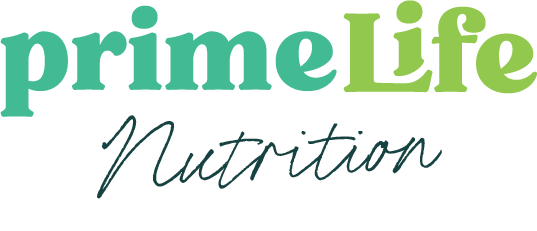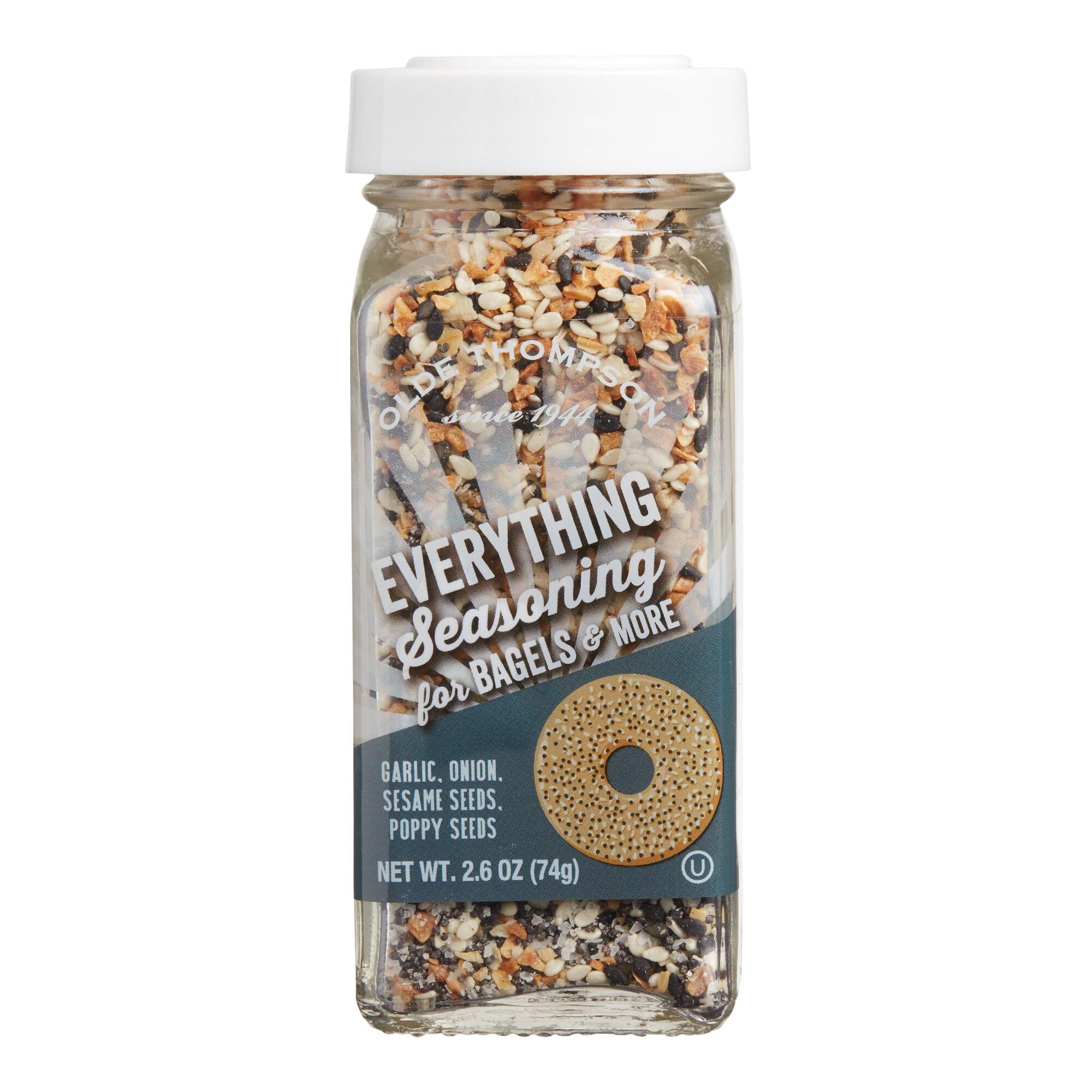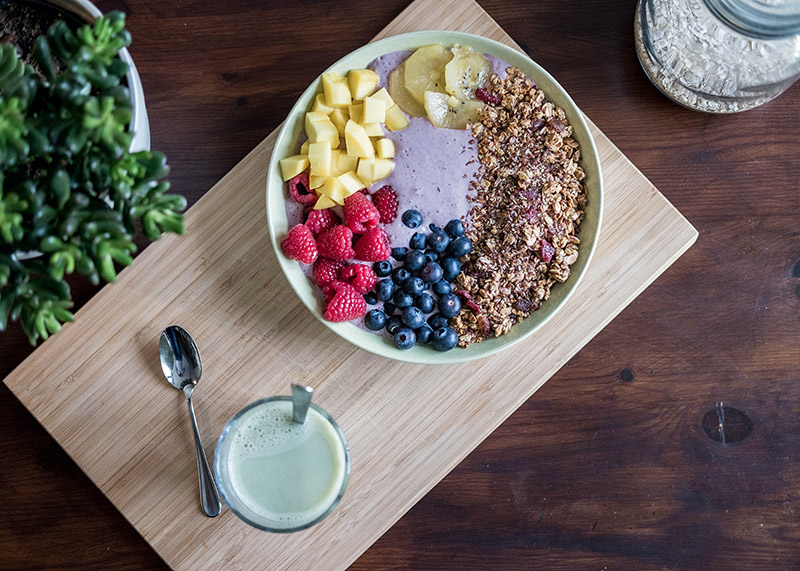
by Primelife Admin | Jan 18, 2021 | Featured, Food Science, News
Superfoods; the buzz word that makes some foods seem like a magic little pill of wonder. But what about these foods make them super? Why some foods and not others? What’s the criteria a food has to have to be a superfood?
Let’s first look at the definition of a superfood: “a nutrient-rich food considered to be especially beneficial for health and well-being”. Is this not the most vague definition? Almost any food can be considered beneficial for health and well-being. There are no requirements or specifications to consider a food super. That being said, the buzzword can be applied to pretty much anything. Check out the most common foods labeled as superfoods:
- Dark leafy greens
- Spinach, kale, collard greens, broccolini
- Seeds
- Flax, chia, hemp, sesame, poppy
- Fruits
- Berries, apples, pomegranates, pineapple, oranges, goji berries
- Vegetables
- Celery, tomatoes, peppers, eggplant, squash, broccoli, sweet potatoes
- Beans/legumes
- Chickpeas, black beans, navy beans, kidney beans, lentils
- Grains
- Sprouted, popcorn, quinoa, barley, oats
- Healthy fats
- Tuna, salmon, avocado, olives, nuts
- Oils
- Avocado, sesame, grapeseed, olive
- Powders
- Spirulina, acai, seaweed, pea protein, nutritional yeast, collagen
- Sweets
- Dark chocolate, honey, cocoa powder
So why are some foods labeled as superfoods and some not? The answer to that is simple: marketing. When you look at this list of foods, it’s pretty much every food you’d consider to be healthy. This list could go on and on and on. You could even consider a beef burger a superfood since it has benefits to our health (high iron and protein). What marketing companies are betting on is that you go for the package that’s labeled as a superfood and also $1-2 more than the competitors.
The moral of the story here is all foods can be considered super. There is not some magic component in them that makes them better than any other food. Yes, you want more of them on a daily basis and they have wonderful health benefits, but they will not magically make you healthy when you eat them. So next time you grab those apples or kale because they are considered a superfood, make sure you’re buying it for the right reasons. Always eat a variety of foods to ensure you’re getting all the vitamins and minerals our bodies require. The more the merrier!
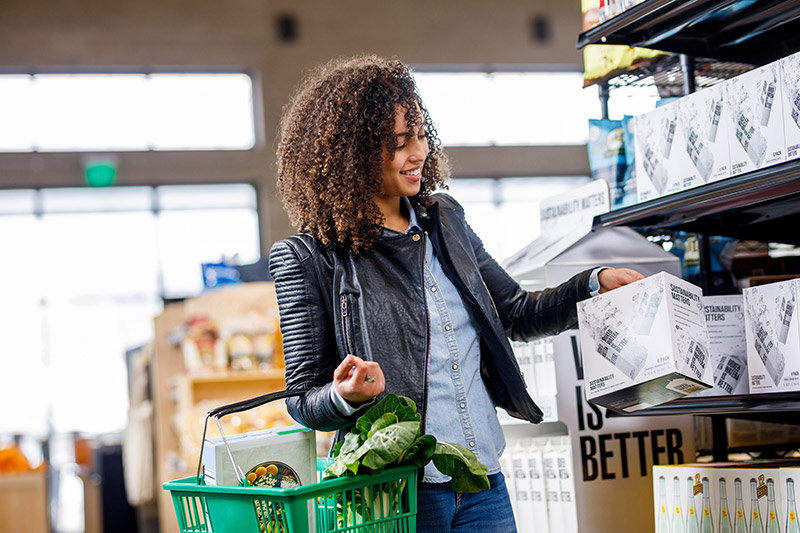
by Primelife Admin | Dec 21, 2020 | Featured, Food Science, News
When you head to the grocery store, do you go with a plan, a list, or an agenda? This can help keep you on track, but most grocery stores are counting on you browsing and buying more than you need. They have many methods in place that persuade you to add extra items to your cart that you didn’t plan on buying. Before you know it, a trip that should’ve cost about $130 ends up costing closer to $250-300! Sounds like Target trips, am I right? Check out the top ten tricks the grocery store puts in place to get you to buy more than you need.
- The Atmosphere
Grocery stores want you to walk into a bright and inviting store. This is why the produce is front and center when you enter. It’s colorful, bright, and boosts your mood. You’ll often see the floral department or bouquets of flowers in the front entrance as well. How do flowers not brighten your mood? Another quick trick is one you hear and not visualize. The music they play in the store is made to be upbeat and make you feel good. If we know anything, we know that when we’re in a good mood, we’ll end up buying more.
- Layout of the store
Ever heard the advice to stick to the perimeter of the store for healthy foods? Well, this is also where the higher ticket items are. Fresh produce, meats, fresh dairy, and seafood are all on the perimeter of the store and ironically the more expensive items as well. They also strategically have the bathrooms and staple foods items like bread, milk and eggs in the back of the store so you’ll walk through the whole store to get to them. They’re counting on you adding more items to your cart while walking to the back of the store.
- Reducing the price by a penny
If you look at something that’s $4.00 versus something that’s $3.99, you perceive the $3.99 item to be cheaper. It’s been researched many times that lowering the price by just a penny persuades customers to buy it. Although we know that it’s a $4 item, we’re more likely to buy it seeing the 3 in front of it rather than the 4.
- Giving percentages off rather than dollars
Using percentages off makes an item seem like more of a deal rather than giving a certain dollar amount off. If a steak is $20, most stores will advertise that it’s 20% off rather than giving $5 off. Twenty percent off is only $4 off the purchase price, even though the number of the discount is higher. So although it seems like a better deal, it may not be as great as you think!
- Buzzwords
They work everytime! Putting certain words on packages automatically makes us perceive it as healthy. Seeing “gluten free”, “all natural”, “high protein”, “keto”, “paleo”, “low fat” are just a few of the buzzwords that we see on foods. These don’t necessarily make foods a healthy option, but what they will do is increase the price. You’ll end up spending more on something that you may not have needed, but because it looks healthier, you just have to try it!
- Bo-Go Items
Buy-one-get one free always seems like such a great deal. However, that food or drink is overpriced and then listed as “bo-go” to get you to buy two rather than one. Companies set the price to cover the 50% off and also make a profit. So next time you see this deal, think about whether or not you really need two and if it’s actually a good deal.
- Increasing Demand
Creating a false sense of urgency is a great way to create demand. When you see “limited time”, “limited release”, “new flavor”, “while supplies last” and “single-batch” you’re most likely to grab it because it’s new and something that may not be there the next time you come back. The stores are counting on you wanting to try the newest item or flavor so you grab it while you can.
- Product Placement
Every item that’s placed on the shelves is placed with intention. Ever notice that the store-brand items are often on the bottom, name brand is in the middle of the shelves and the highest priced items are towards the top? Consumers are more likely to grab the foods at eye level or higher, so the cost of the foods you buy are just a little bit higher than store-brand.
- Check-out line grabs
The check-out line always has candy, gum, and snacks at the ready so you can grab a pack of gum or that sweet treat you’ve been craving. These items are purposely put at arms-reach of kids in the cart so they can grab it as well. Just another way to increase your spending amount, even by a candy bar.
- Paying virtually
Credit cards and apple pay have made it SO much easier to swipe or scan and everything is paid for. This ease of payment makes the cost of the bill seem unimportant and something we don’t even think about. If you were to pay in cash and have to count it out, it makes it feel much more real. The easier it is to pay, the less we’re likely to pay attention to how much we’re spending.
Next time you hit the grocery store, make sure to have a list of items, stick to the list and try not to be persuaded by buzzwords. Of course there’s always that one thing you want to try or that grabs your attention, but now you can be more aware of some of the tactics stores are using. Moral of the story here is grab the foods that interest you, but if you’re trying to stick to a budget, beware of these strategies!
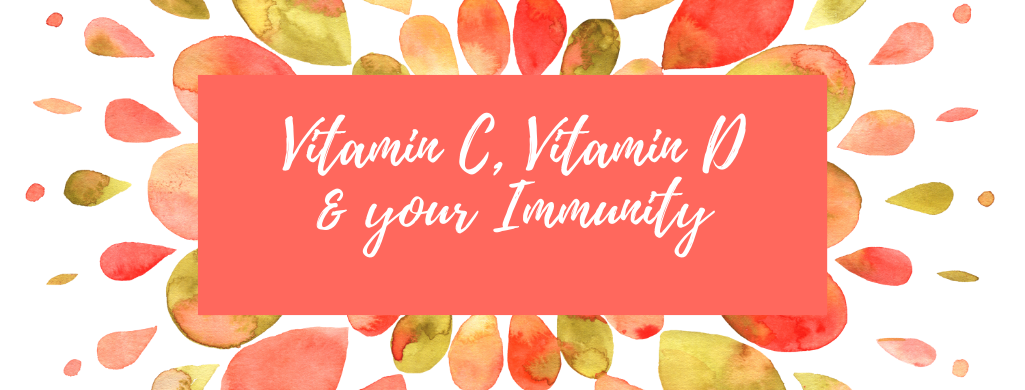
by Primelife Admin | Aug 17, 2020 | Food Science, News
Your New Best Friends for Immune Health–Vitamin C and Vitamin D
In these times of COVID-19, we are becoming more aware and knowledgeable about how illnesses spread. We know that it is important to wash our hands, refrain from sharing drinks, and be cautious of our distance between our friends and family–But how do you set your body up for success when you DO come into contact with germs? Vitamin C and Vitamin D have your back.
Vitamin C Immunity Benefits
Vitamin C is an antioxidant and plays a major role in the growth and repair of our bodies. It prepares your body to fight and then speeds up your recovery if you do end up getting sick. In other words, paying more attention to getting Vitamin C into your diet can decrease the length of time you are sick for, allowing you to recover faster and get back on track.
How can I get Vitamin C?
Vitamin C must be consumed through food because it cannot be produced by your body. Great sources of Vitamin C include fruits and vegetables such as citrus fruits, tomatoes, potatoes, strawberries, green and red bell peppers, broccoli, brussels sprouts, and kiwi. Many of these foods can be enjoyed cooked as well as raw. If you do decide to cook your fruit/veggie, be cautious around how long the food is being cooked for and how high the heat is. Too much heat for long periods of time can decrease nutrients in the food. Microwaving or steaming are good options to minimize nutrient loss while still achieving the desired texture of a cooked food.
Vitamin D Immunity Benefits
A lack of Vitamin D has been proven to correlate with an increased risk for infection. In fact, Vitamin D used to be used to fight tuberculosis before antibiotics were created! This is because Vitamin D is expressed on your immune cells. Vitamin D decreases inflammatory processes, increases antiinflammatory processes, and helps the body better absorb minerals such as calcium and phosphorus.
How can I get Vitamin D?
Your main source of Vitamin D is the sunshine! Try getting out of the house when taking a break from work for just 15-20 minutes to soak up the sun on your bare skin. Spending well over this amount of time without sunscreen or protective clothing on is Vitamin D overkill and can increase risk for burns. It may sound simple to get your daily Vitamin D dose, but over half of the world is deficient because most daily routines in this day and age require us to be inside. Vitamin D can also be absorbed through food, but these food sources are not common or accessible to many. Vitamin D rich foods are cod liver oil, salmon, swordfish, tuna fish, orange juice fortified with Vitamin D, milks fortified with Vitamin D, sardines, and beef liver.
Should I supplement Vitamin C and/or D to make sure I am getting enough?
It is recommended to focus on getting nutrients from food sources (food and sun in the case of Vitamin D) before supplementing. Look back at the food sources for Vitamin C and Vitamin D and choose a few that you would enjoy eating. If you enjoy it, you’re more likely to be consistent. Supplementation should fill in the gaps. However, research has shown that half of the world is not able to get enough Vitamin D from food and sunshine. Therefore, many could benefit greatly from taking a supplement. It is important to talk to your dietitian or doctor to make sure you are getting the correct amounts for you.
- Written by Tara Greenwood, Penn State University Nutrition & Dietetics Student
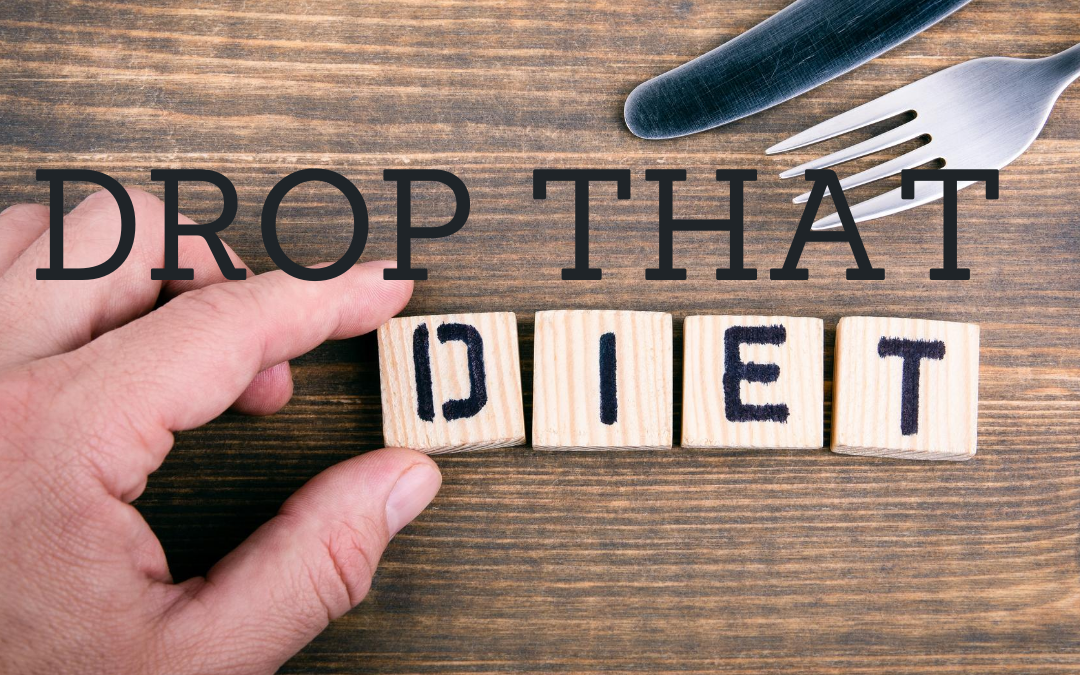
by Primelife Admin | Jul 29, 2020 | Featured, Food Science, News
What do the Keto Diet, Paleo Diet, Weight Watchers, Nutrisystem, Noom, Atkins, and even Intermittent Fasting have in common? They’re ALL some type of fad diet. It’s another one of those “tried it, had success, and then gained my weight back” diet plan that will always stick around no matter how hard we try to stay away from them. Fad diets date back to the Victorian era in the 1900s!! They’ve been a part of our culture for as long as we’ve all been alive and that’s one reason why they’ll always stick around. They are an entire culture built on money, marketing, the scale, and before and after photos. Thankfully, what we know now versus what we knew even 20 years ago is changing and leaning more towards an acceptance of the body, and overall health; not just being as skinny as possible and shaming ourselves when we fail to meet our own high expectations.
As defined by the medical dictionary, fad diets are defined as “ Any of a number of weight-reduction diets that either eliminate one or more of the essential food groups, or recommend consumption of one type of food in excess at the expense of other foods. Fad diets rarely follow sound nutritional principles for weight loss, which focus on ingesting fewer calories and/or consuming more energy through exercise; fad diets are generally not endorsed by the medical profession.”
I honestly couldn’t have said it better myself. Any diet that restricts or eliminates food groups, creates a feeling of deprivation, and only focuses on weight loss is created to give you short-term, fast results. Nothing in a fad diet will provide healthy principles that will give a long-term result that you can live with forever. So why do we keep chasing these diets and thinking that we “just haven’t found the right one for us yet?” Among the millions of reasons, a few of the most obvious include:
- Because they “work”
- People get results and they get them fast (30-90 days on average)
- Before and after testimonials showing an unrealistic improvement
- They give off the illusion of being “easy”
- Organized and planned for you
- BIG money makers
Let’s elaborate a bit on these points. By saying these diets work, I’m saying that you will get results and you will lose weight, but to what detriment? What happens when you stop this diet and go about your normal life again? Chances are, you’ll gain your weight right back. Diets aren’t structured to be followed for the rest of your life, they are created to give you drastic results that won’t last.
With the before and after testimonial pictures we constantly see, we think “well I want that, I want to feel and look that great”. The problem with these pictures is that you are NOT that person. Every body is completely different, and will respond differently to any diet.
They make transformations look easy because all you see is the before and after; not the struggles that person dealt with in between those photos.
Another reason we keep buying into them is they’re all planned out and organized for us. We don’t have to think about what to eat or how to exercise, it’s already made for us. But the problem with this is that no one body is the same! We absolutely cannot put ourselves into categories of diets and expect to have the same results of someone else that we know did it. Of course, they are HUGE money makers. Every one of these includes paying more money and giving you a sense of having “skin in the game” so you’re more dedicated to following a diet. Whether it’s buying their food, using their products, or going out and buying all new food for a meal plan, you’re going to be spending more money for something that’s not necessarily guaranteed.
I hope by now, you’re in a place where you’re ready to get rid of a diet and get on a long-term, life plan. How do we get off of the fad diet hamster wheel and into a consistent, real-life routine? We need to take time, dedication, be patient, and stay organized. Of course, meeting with a dietitian is the best way to find a healthy, balanced plan that will work for you and only you. Losing weight and feeling healthy isn’t always about the number on the scale or the number of workouts you do in a week. Feeling and looking your best is about appreciating your body and what it can do for you, as well as eating foods you genuinely enjoy and STOP restricting the foods you love.
When you stop setting rules and regulations for yourself, you’ll find a better balance between the “everything in moderation” motto we all hear so much about.
We also have to remember that feeling and looking healthy takes time; months, years or even decades. I often say to my clients that patience is the hardest part of weight loss. We are a society of instant gratification, but when it comes to your body, this is absolutely not the case. The harder you are on yourself for what you’re not doing, the more negative self talk you’re allowing. We need to be positive, focus on the wins we have, and throw the scale away. Who cares how much you weigh when you’re feeling your absolute best and have the most energy you’ve had in years? Everyone’s healthy body looks completely different; we need to stop comparing ourselves.
Fad diets are a part of our diet culture, and they will unfortunately never go away. So long as we keep buying into them, they will always stick around. So next time you think about starting a diet, think about your long-term goals. Working with a licensed professional will help you get around the physical and mental blocks to finding your healthiest self. Do yourself a favor and help us help you! Give us a call today!

by Primelife Admin | May 29, 2020 | Featured, Food Science, News
It’s a very common question in my office from my patients: what should I do when I’m going out to eat? We work SO hard during the week to stay consistent and eat clean, but when the weekends roll around, we forget how hard we’ve worked. We want to let loose and just enjoy ourselves without feeling like all the work we did during the week is just cancelled out. The food and drinks we indulge in don’t always have to make you feel worse before another week hits us. So here are my top tips for what to do, plan, and expect for when eating out…
HAVE A PLAN
Read the menu to make a plan ahead of time. When you have a plan, there’s no decision to be made when you’re actually in the restaurant. When you go out to eat, you want to enjoy the company around you, not worry about what you’re going to order and how many calories it’s going to be! Just remember that chain restaurants are legally required to provide calories, where mom and pop type places do not have to. We’ll talk more about strategies with calorie-less restaurants…
HYDRATE
Make sure you’re drinking water before and throughout the meal. It’s no secret that when you drink enough water, it helps lower appetite. Making sure you’re hydrated before you start eating helps keep those hunger pangs away and ultimately helps you make a more mindful decision when you’re looking at a menu.
SHARE
Don’t be afraid to share: an app and an entree with a friend or beau. Collaborating with the person you’re dining with can not only help with portion control, but it can offer up more dishes to try, and your wallet will thank you. Getting both an appetizer and an entree will give you more dishes to try than if you were to just get one entree and forego the app. Go outside of your comfort zone and try something different.
SIMPLIFY
Keep it simple; stay away from creams, gravies and sauces. Ordering a protein and two side dishes can often be a lot less calories than a salad. The less there is within each meal, the less calories it’s going to pack in. Watch for things that may seem healthy, but have sauce, cream or gravy along with them. Grilled chicken can be great, but not if it comes topped with cheese, heavy cream, or gravy. Forego the sodium-ladened additions and keep it simple.
MAXIMIZE
Try to get dishes that are 500 calories or less. This may seem like a lot of calories, but when you look at the calories on most menus, this is more difficult to find than you’d think. Most meals can easily provide 800-1200 calories, and that’s just the entree, let alone the fries and the drink you have with it. So sticking with under 500 calories per meal can help limit that overstuffed and bloated feeling after eating out.
SNACK…ALWAYS SNACK
Snack ahead of time; never go hangry. Imagine sitting in a restaurant, your stomach is yelling at you out of hunger, and you want to make a healthy choice, but all you see is juicy burgers and chicken fingers on the menu. You’re going to say “F’ it” and order the cheeseburger because you’re literally STARVING. Making decisions when you’re hangry can be very dangerous, so never let yourself get hangry or save your calories for the day before you go out to eat. Otherwise, you’ll regret it later, stuff yourself full, and won’t be hungry for the rest of the day.
WATCH YOUR MIXERS
Avoid drinking your calories; try seltzer water or tea. Take the surge in craft beers for example. Many craft beers (which are the tastier ones) are typically between 200-300 calories for one, and the likelihood you’re just having one is usually slim. So it’s better to stick with a hard liquor, use water, plain iced tea, or seltzer (calorie-free) as your mixer, and you typically don’t need as many. This will keep calories low and again prevent any serious stuffed feeling after your meal.
GET PICKY
Try soup and salad for a little bit of everything. I often get in the mood for something hot, but I want some crunch and veggies too. I’ll get a soup and salad or chili and salad which is very filling, the portions are automatically smaller than a full entree, and you’re getting the satisfaction from different textures when you eat. Sometimes it’s better to pick on different things, than order a healthier meal you’re not really craving. The more you try to avoid that craving, the more it will pick back at you.
NON-NEGOTIABLES
Identify your non-negotiables. What I mean by this is what to you means you’re truly enjoying your meal. If you order something because you know it’s better for you, but all you can think about is that cheesesteak that you really want, you’ll be left feeling unsatisfied and still wanting more. You often will snack on other people’s food that you’re with just to get some satisfaction. Think about what you want and order a salad with that cheese steak instead of fries. Or put cheese steak on top of your salad and skip the bun altogether. Figure out clever ways to eat the foods you love, without going overboard with other unhealthy foods. You’ll feel better AND satisfied.
TAKE YOUR FOOD HOME
A cardinal rule that’s been around forever, but still rings true. It’s helpful to try and eat half of your meal and take the other half home rather than just stuff the rest in your belly, because “it doesn’t seem like that much.” Going back to the calorie amounts in foods, most meals are over 1,000 calories. So by splitting up your portions in two, you’re not only cutting calories but you’re also sticking to a smaller portion that will leave you feeling lighter after a meal. Another bonus; you get to eat and enjoy your meal twice over! I don’t know about you, but to me that’s winning.
So next time you’re ordering or eating out, think about a few of these tips and try to implement them when necessary. Eating out doesn’t mean you have to leave feeling stuffed, tired and fluffy. It’s up to us what we put in our mouths, so do yourself a favor and leave the restaurant feeling empowered, in control, and satisfied!
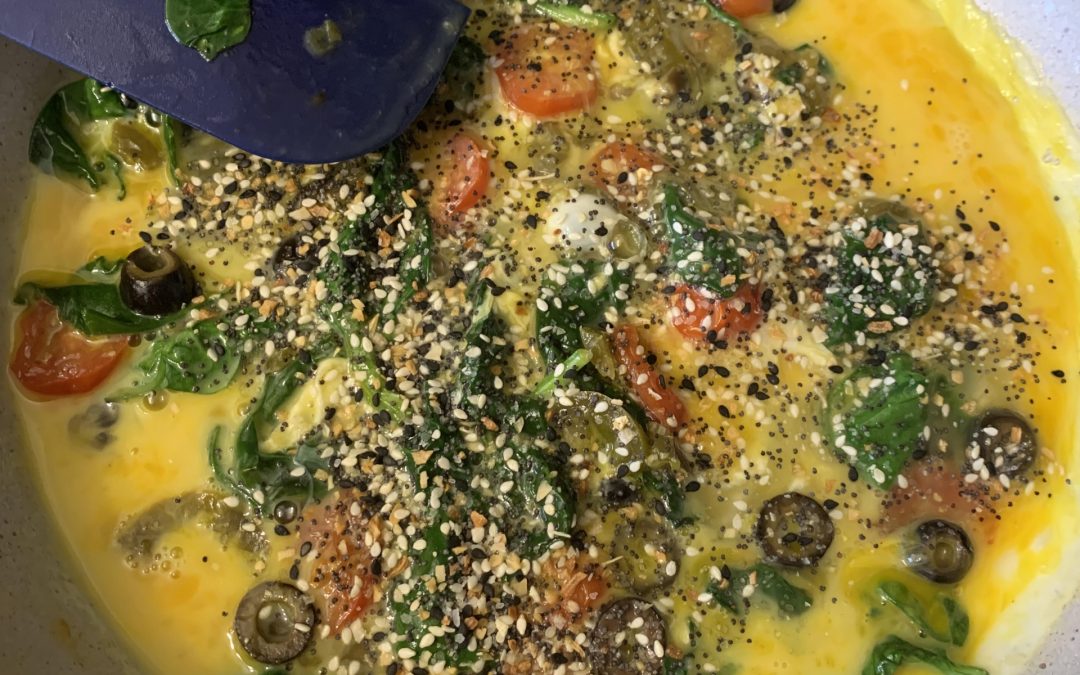
by Primelife Admin | Jan 28, 2020 | Featured, Food Science, Meal Prep, News
Everything bagel seasoning has emerged as the latest thing to literally put on everything. So why not provide you with some knowledge on why it can be great for you and how you can use it more often! It all started with a grocery store called Trader Joe’s. They came out with a little bottle of magic called “Everything but the bagel” seasoning, and it sounds exactly like it is…everything but the bagel.
It’s simply the seasoning that you find on an everything bagel, but guess what….it’s good on everything!!
It’s comprised of sesame seeds, poppy seeds, dried onion flakes, dried garlic flakes, and sea salt. All these flavors formed into one make a super seasoning! So why should we use it on foods? The poppy and sesame seeds are going to offer up more healthy fats (omega-3s), offer more satiety in meals, and of course load it up with flavor. Calories are moderately low, so this seasoning is a great choice to add a burst of flavor. A serving size is considered ¼ tsp which offers up a whopping 5 calories, so while it still provides calories, it’s not going to load calories onto a meal like a sauce or marinade would. You do still have to be aware of the sodium, since sea salt is one of the ingredients, but as a whole, this can be a great choice on lots of different foods.
If you haven’t tried “everything” seasoning yet, here are a couple of foods you could try it with to see if you truly like it. I’ve personally thrown it onto my eggs (which is amazing), coated chicken and steak with it, added it to roasted veggies, and you could also add it to a soup, salad or avocado toast as well! There are SO many ways you can use this seasoning that it’s almost silly not to try it.
Finding this seasoning used to be much harder, but with the popularity of it growing, it’s easier to find. Some big stores you can find it in include Walmart, Costco,Giant, Redner’s and of course the OG Trader Joe’s. If you don’t feel like buying it, chances are you have all the ingredients to make it at home too!
- 1/4 cup sesame seeds
- 1/4 cup cups poppy seeds
- 3 tbsp tbsp dried onion flakes
- 3 tbsp dried garlic flakes
- 2 tbsp course sea salt
Mix all this together and you’ll get 1 cup of deliciousness! Time to take your meals up a notch!

